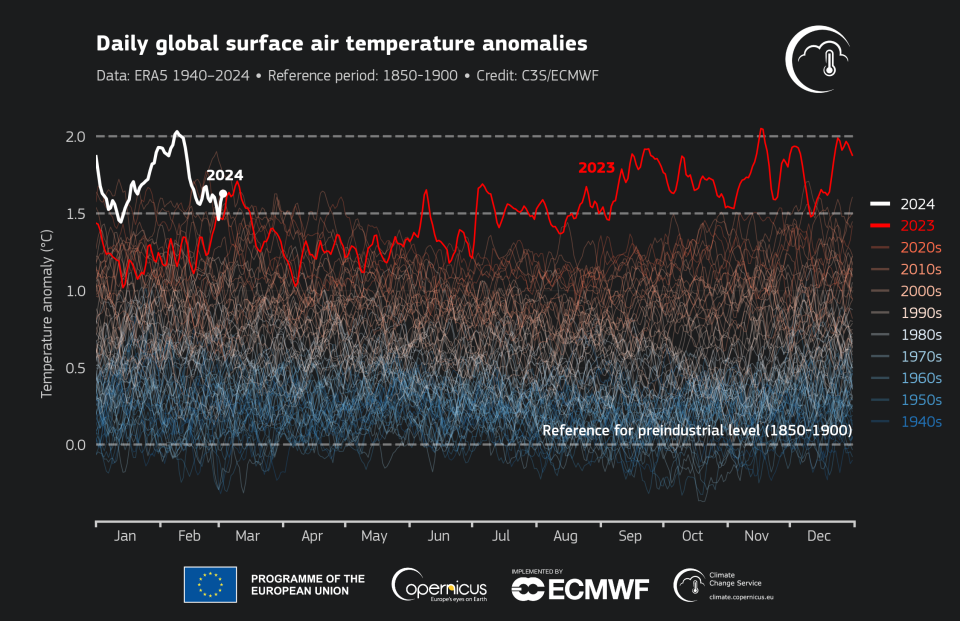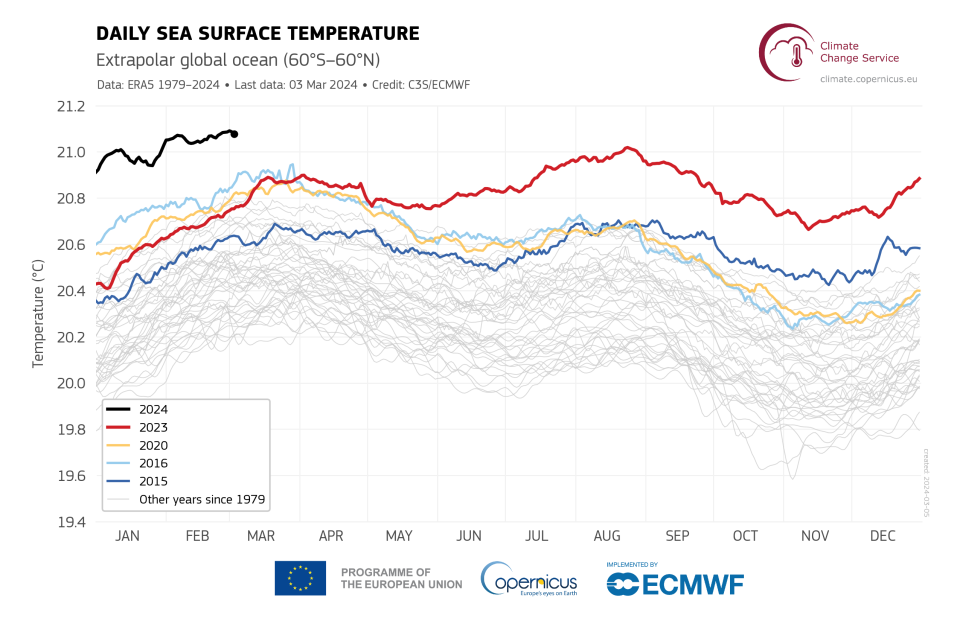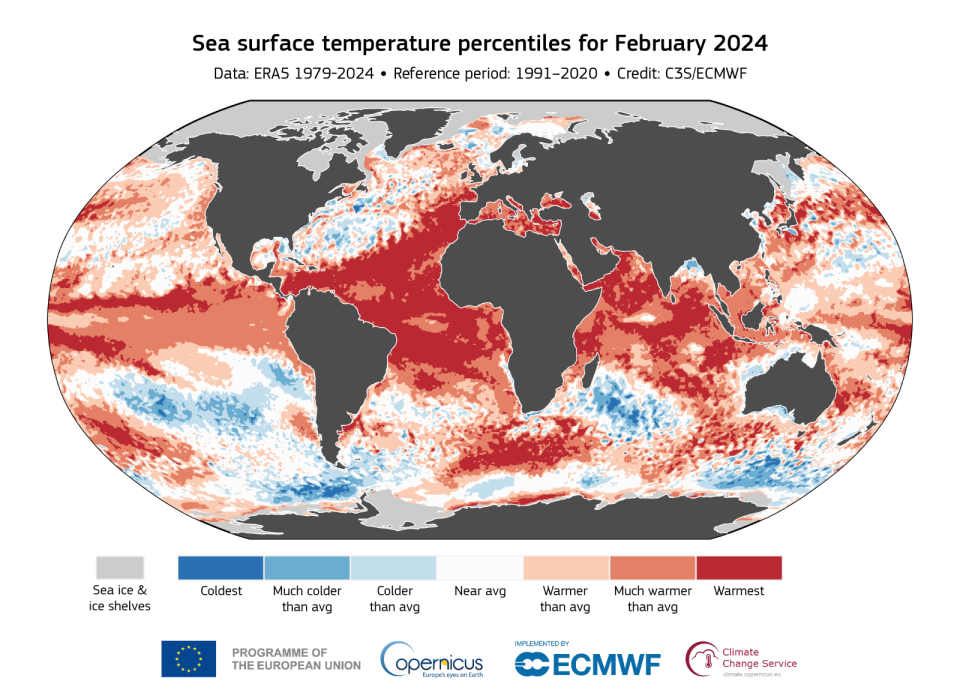The world has yet another warm month in a row. New data from Copernicus, the European Union’s climate change monitoring service, shows that last month was the warmest February on record in the world, with “very high” temperatures in both air and sea.
The record heat comes as the United States continues to face extreme weather conditions. In recent weeks, communities across the country have seen spring and summer like temperaturesheavy rains and floods, huge snowand weather conditions that drove Texas’ fires largest wildfire ever which quickly became one of the largest in US history. Such extremes are a byproduct of global warming caused by climate change, and are only expected to become more frequent and more severe as warming continues.

According to Copernicus, the average global surface air temperature in February was 13.54 degrees Celsius (about 56.4 degrees Fahrenheit). That’s 1.77 degrees Celsius above the pre-industrial average for February, making it the ninth month in a row where each month has been the hottest on record. That comes after 2023 broke the record don hottest year.
The highest temperatures in February, considered “very high,” were seen within the first two weeks of the month, Copernicus found. Scientists told the group that the average daily global temperature during that time reached 2 degrees Celsius above the pre-industrial average four days in a row, from 8 to 11 February.


The world’s oceans – which absorb 90% of the Earth’s heat – also saw record high temperatures. Copernicus found the average global sea surface temperature for February to be 21.06 degrees Celsius (69.9 degrees Fahrenheit), which the agency said was “the highest of any month in the data set.”
Such high sea temperatures only contribute to the global warming cycle. As a result of warming oceans melting sea ice, which is vital for reflecting the sun’s rays to help maintain cooler temperatures. Without the ice, sea levels continue to rise and temperatures continue to rise, two factors that trigger extreme weather events.
As a result of warmer oceans also rampant coral bleachingfurther threatening marine ecosystems and economies.


Climate scientists have long warned of a number of climate thresholds that put the world at further risk of extreme weather conditions that threaten people around the world, especially those living on coasts and islands. Those thresholds include reaching global temperatures of 1.5 degrees Celsius above pre-industrial levels in several years, or 2 degrees of warming even more severe. January was marked on the for the first time on record that global average temperatures reached the 1.5 degree warming threshold over a period of 12 months.
Passing those milestones in February does not mean that the world as a whole has crossed the threshold, but it does indicate that human activities are continuing on the way to doing so.
Carlo Buontempo, director of the Copernicus Climate Change Service, said that while the data is “impressive”, it is not surprising as the continued warming of the climate system leads to new temperature extremes.
“The climate responds to the actual concentrations of it greenhouse effect gases in the atmosphere,” he said.
The recent records come amid ongoing records El Niño event which started last summer. The system occurs every two to seven years when the Pacific Ocean experiences “warmer than average” surface temperatures. The most recent El Niño peaked in December, and at that peak, the World Meteorological Organization said it was “one of the five strongest on record.”
“It is now gradually weakening, but it is clear that it will continue to affect the global climate in the coming months,” WMO spokeswoman Clare Nullis said at a recent briefing. “So, even after it disappears completely, we will still feel the effects of this event.”
This El Niño in particular was partly fueled by human activity, she said, as people continued to burn fossil fuels, releasing greenhouse gases that essentially blanket the atmosphere, trapping the sun’s heat .
“El Niño is a natural event, but everything now, every El Niño event, every La Niña event, happens in the context of a climate that has been fundamentally altered by human activities,” Nullis said. “We are expecting above normal temperatures in the coming months.”
Simply Recipes announces the winners of the inaugural “Freezies” awards.
Election dynamics come to a head as Nikki Haley puts the campaign on hold after Trump’s victory
South Dakota Gov. Kristi Noem calls on Nikki Haley to drop out of the 2024 race